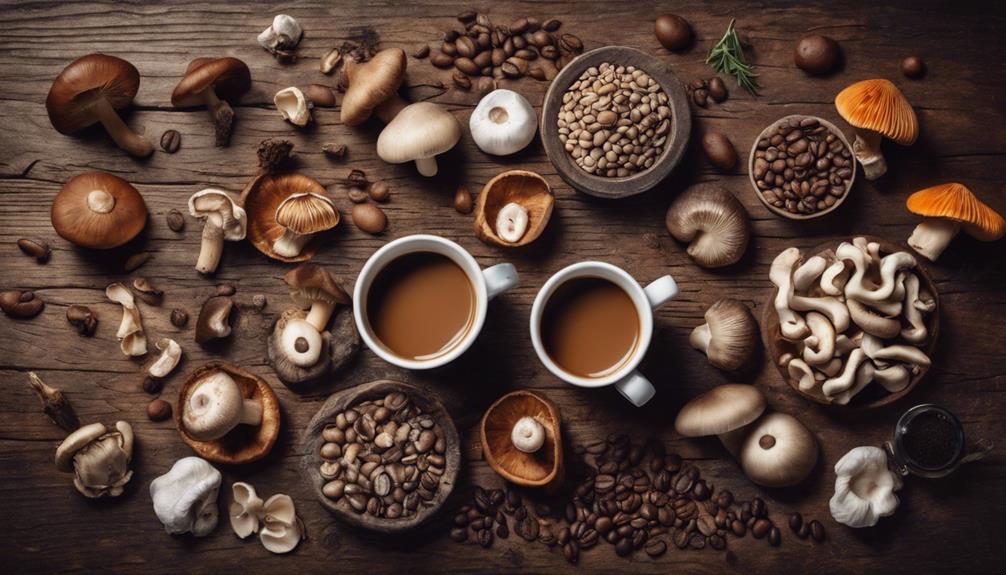When inviting your crush for coffee, it is important to be direct and confident in order to establish a genuine connection. Initiate a casual conversation and smoothly suggest meeting up for coffee. Keeping it simple and authentic will demonstrate your interest. If you’re feeling nervous, remember that confidence is attractive. A sincere smile and a straightforward invitation can go a long way. By confidently asking your crush for coffee, you are already taking a positive step forward. If they agree to coffee, it presents a great opportunity to bond in a relaxed environment. It may even lead to asking your crush out on a proper date in the future. Stay true to yourself and be confident in your approach. You never know where this confident ask for coffee could take you.
Key Takeaways
- Start with casual conversation to gauge interest.
- Suggest meeting for coffee in a friendly, low-pressure manner.
- Be genuine and confident when asking.
- Choose a comfortable and neutral location.
- Respect their response, whether positive or negative.
Overcoming Shyness and Anxiety
To overcome shyness and anxiety when asking your crush for coffee, engaging with others can be a helpful way to boost your confidence. Meeting new people in clubs or through volunteer work can make you feel more comfortable in social situations.
By practicing talking to random individuals in everyday scenarios, you can help build your social skills, making it easier to approach your crush. Additionally, confiding in a trusted friend about your feelings can help alleviate some of your anxiety and boost your confidence.
Setting small goals for yourself and focusing on positive self-talk can gradually assist in overcoming shyness when it comes to confessing your feelings. Remember, taking small steps towards building your confidence and social skills will make asking your crush out for coffee feel less overwhelming.
Confessing Your Feelings Indirectly

Confess your feelings indirectly by dropping subtle hints through actions and casual conversations with your crush. Sometimes, letting your crush know how you feel without directly expressing it can be a good way to gauge their interest and avoid potential awkwardness. You can show your feelings through gestures like offering to help them with a task, remembering important details they've shared, or finding common interests to bond over. Engaging in light-hearted conversations that hint at your admiration can also convey your emotions without explicitly stating them. Consider writing a thoughtful note expressing your feelings and asking your crush out for coffee in a non-threatening manner. If you feel comfortable, confiding in a trusted friend to help you navigate this situation can provide support and guidance. Remember, indirect confession takes time and subtlety, so be patient and observe how your crush responds to your hints.
| Indirect Confession Tips | ||
|---|---|---|
| Let actions speak louder than words | Drop hints in casual conversations | Consider writing a heartfelt note |
Directly Confessing Your Feelings

When considering directly expressing your feelings to your crush, being straightforward and honest is key. It's important to let your crush know how you feel without beating around the bush. By confessing your feelings directly, you make your crush feel respected and valued.
This approach eliminates any ambiguity and allows for clear communication between both parties. Directly sharing your emotions with your crush can be empowering and liberating, regardless of the outcome. It requires courage and vulnerability to be open about your romantic interest, but it can lead to immediate clarity on both sides.
Remember to express your feelings sincerely and respectfully, making sure your intentions are understood. This direct approach can potentially pave the way for a deeper connection and create a space for honest conversations. Just make sure that any entities without the express license applied to text are acknowledged.
Considerations Before Confessing

Consider assessing your feelings and intentions before deciding to express your romantic interest to your crush. Reflect on your comfort level and the motives for confessing. Are you looking to pursue a relationship or simply seeking to disclose your emotions? It's essential to prioritize your mental well-being and avoid overwhelming stress. If confessing feels intimidating, seek emotional support from trusted individuals to help you navigate your emotions.
Before confessing, try building up to it by initiating subtle interactions and gestures with your crush. This can help gauge their interest and create a more comfortable atmosphere for sharing your feelings.
Remember, it's okay to take your time and assess the situation before making a decision. If the timing doesn't feel right, it's perfectly acceptable to hold off on confessing until you feel more prepared.
Your emotional well-being should always come first in matters of the heart.
Handling Rejection and Benefits

Dealing with rejection is a natural part of expressing romantic interest and requires self-compassion and support from loved ones.
Coping with rejection can be challenging, but seeking emotional support from friends and family can help you process your feelings and heal.
Sharing heartbreak experiences with others can offer comfort and perspective after being rejected.
Engaging in self-care activities post-rejection is essential for maintaining emotional well-being and fostering resilience.
Taking time to nurture yourself after rejection is key to building self-confidence and moving forward positively.
Remember that processing feelings after rejection is a crucial part of the healing process.
Seek support from those who care about you, and remember that it's okay to feel hurt.
With time and self-care, you can emerge stronger and more resilient from the experience.
Frequently Asked Questions
How Do I Ask My Crush for Coffee?
Just ask your crush to grab coffee with you! Keep it simple and casual. Suggest a specific date and time. Choose a cozy spot. Express your interest in getting to know them better. Be friendly and confident.
What to Say to Your Crush When Confessing?
When confessing to your crush, speak from the heart. Be sincere and direct about your feelings. Express your genuine emotions and intentions clearly. Remember to be confident and honest in sharing your true emotions.
How Do I Confess to My Crush Without Being Weird?
Approach your crush naturally, choose a private spot, and speak honestly. Be direct but kind. Start with light conversations to build comfort. Stay genuine and respectful to convey your feelings sincerely and avoid coming off as weird.
What to Say to Your Crush to Ask Them Out?
To ask your crush out, keep it simple and genuine. Say something like, "Hey, would you like to grab coffee together sometime? I'd love to get to know you better in a casual setting. Sound good?"
Conclusion
So go ahead, take the leap and ask your crush for coffee!
Remember, the early bird catches the worm, and the early coffee date could lead to something special.
Don't let fear hold you back from potentially finding love or at least enjoying a nice cup of joe with someone you admire.
Good luck, and may your coffee date be filled with laughter, connection, and maybe even a hint of romance!









